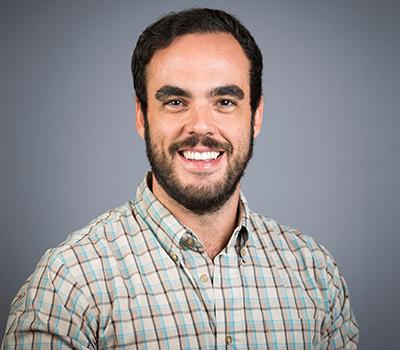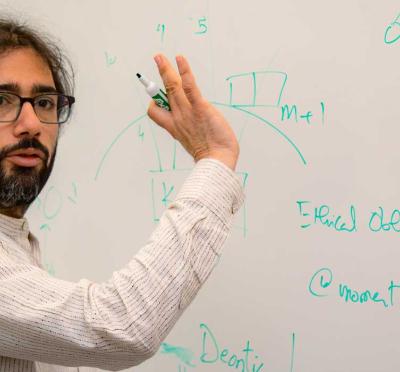The rugged landscape of Lesotho, a landlocked country in southern Africa, is a place where Phylicia Cicilio sees her work making a life-changing impact.
The small, mountainous country ranges from lowlands, starting at an elevation of 5,000 feet, to its highest peak of 11,424 feet. The country’s inaccessibility has been a major factor in its political autonomy (it is surrounded by South Africa), but also makes it nearly impossible to have a comprehensive electric grid. Nearly three-quarters of its 2.2 million inhabitants live in isolated villages without electricity.
OnePower Lesotho, an off-grid energy startup, aims to change that by building economically and environmentally sustainable minigrids. Combining local, small-scale electric generation with a village-sized distribution network, minigrids often use renewable energy sources such as wind or solar, allowing communities to have self-sustaining power independent of a centralized grid.
For Cicilio, a graduate student in electrical and computer engineering at Oregon State University, the project was a perfect fit for her goals of working with renewable energy and improving energy access for remote communities. “Access to electricity levels the playing field,” Cicilio said. “It can increase your business and employment opportunities, your education opportunities, your hygiene. It’s everything.”
Cicilio, who plans to finish her doctorate in spring 2020, came to Oregon State because of its well-known faculty in the area of power systems. Her advisor, Eduardo Cotilla-Sanchez, associate professor of electrical and computer engineering, focuses on electrical infrastructure resilience and protection, with applications for integrating renewable energy.
Her first project as a graduate student was modeling an existing grid in Nome, Alaska, to study potential improvements of grid reliability by adding energy storage. The project was funded by an Evans Family Graduate Fellowship in Humanitarian Engineering at Oregon State and a National Science Foundation Graduate Research Fellowship. The two fellowships also allowed Cicilio to seek out the humanitarian project with OnePower.
As part of the initial steps on the project in Africa, OnePower developed an open source engineering tool called uGrid to help optimize the design of minigrids to achieve the lowest possible cost per unit of electricity. Cicilio’s role was to extend the tool to include the design of the distribution network. Specifically, the network maps out placement of utility poles and transformers and where to run wires to be maximally efficient and resilient, while remaining mindful of the geography and sensitive to the culture of the people.
“Phylicia was enthusiastic to take on the challenge of developing this extension, called uGridNET, from scratch,” said Matt Orosz, founder and CEO of OnePower. “The result of her work is that we have now closed this critical gap in our design tool set and contributed to the sector’s knowledge base through a published research paper.”
For a case study, Cicilio used uGridNET to design a minigrid with solar panels and a backup propane generator for the Lesotho village of Ha Makebe, which will be the first community to receive power. OnePower’s countrywide project includes 33 minigrids that will reach more than 5,000 households and 25,000 people.
One aspect of the tool that was important to Cicilio was the inclusion of a feature to analyze the cost-benefit of network reliability to help communities evaluate their best options. For example, a radial power line grid, which is typical in the U.S., would be the cheapest option because it uses the least amount of power line. But where power outages are a concern, a mesh network grid could make more sense because of its built-in redundancy.
“If you can put a cost-benefit toward reliability, then you can justify meshing, which is just adding a couple more lines at critical spots,” Cicilio said. “So, the tool basically asks: How much value do you want to put on reliability?”
Reliability is a factor in the work she is currently doing with Idaho National Laboratory, where a fellowship will fund the rest of her doctoral work. The purpose of this research is to better integrate distributed wind energy (several small wind power installations) in electric grids of all sizes and generation compositions. The first step has been defining reliability and resilience metrics and using them on a test case for a grid in Texas that uses a lot of wind power. The goal is to create metrics that utility companies will trust, which will ultimately help to promote the use of distributed energy resources such as wind.
“Grid integration is so much more than any one technology. That is why it’s fun,” Cicilio said. “Power systems are just the beginning. There’s the politics and the markets — It’s one giant system, and being able to get into that has been amazing. Especially right now, it is an extremely exciting time with distributed renewable energy generation changing everything.”
MOMENTUM Issue Archives
Questions: editor@engr.oregonstate.edu



